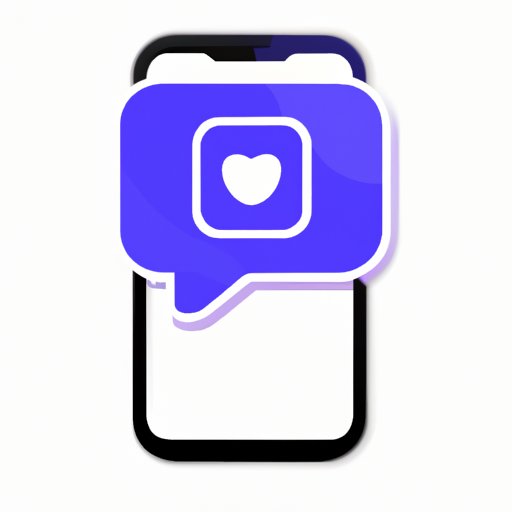
I. Introduction
Welcome to our guide on how to respond to messages on Instagram! Instagram is a popular social media platform used by over a billion people worldwide. Whether you’re using it for personal or business purposes, there are some basic guidelines you need to follow to respond to messages effectively. In this guide, we’ll cover the different types of messages on Instagram, why it’s essential to respond to them promptly, and how to customize your responses. We’ll also discuss specific strategies for handling negative comments and how to set appropriate boundaries for messages that you can’t respond to.
II. The Basics: A Beginner’s Guide to Responding to Instagram Messages
Before we dive into the specific strategies for responding to Instagram messages, let’s first cover the basics. Instagram messages can be divided into two categories: direct messages (DMs) and comments. DMs are private messages sent to you by other users, while comments are public messages left on your posts.
To respond to direct messages, first, navigate to your inbox by tapping on the envelope icon in the top right corner of your home screen. From here, you’ll be able to view all your direct messages and respond to them by tapping on the message and typing out your response.
To respond to comments, simply navigate to the post where the comment was left and type out a response directly below the comment or by using the reply feature.
III. The Importance of Being Prompt: How to Respond to Instagram Messages Quickly
Now that you know how to respond to messages let’s talk about why it’s important to do so promptly. Instagram messages, especially DMs, are often used for urgent inquiries or customer support requests. Responding promptly to messages helps establish trust with your followers and builds a positive reputation for your brand.
One way to prioritize messages is to manage your message notifications. Instagram allows you to customize your notification settings, so you’re only alerted to messages that demand your attention. If you’re unable to respond to messages promptly, use the built-in away message feature to let your followers know that you’ll return to their messages as soon as possible.
IV. Personalizing Your Responses: Tips for Customizing Your Instagram Message Replies
Personalizing your message responses can significantly improve your engagement with followers and clients. By using the recipient’s name, asking follow-up questions, and incorporating emojis, you can create a unique and memorable interaction with your audience.
Begin by addressing the recipient directly in your response, using their first name or username if possible. You can also personalize your response by referring to previous conversations or alluding to shared interests or preferences.
Finally, incorporating emojis into your responses can add personality and humor to your messages. However, be mindful of the context and the sender’s relationship before using emojis. As a general rule, emojis should be used sparingly and appropriately.
V. Staying Professional: How to Respond to Instagram Messages from Customers or Clients
As with any public-facing communication, it’s crucial to remain professional when communicating with customers or clients on Instagram. This means tailoring your response based on the sender’s message’s nature and relationship. For example, if the message is a complaint or negative feedback, avoid being defensive or dismissive. Instead, acknowledge the concern and offer a solution or explanation.
When interacting with clients, it’s also essential to maintain clear and open communication. Be transparent about your pricing, turnaround times, and any other pertinent information. Remember that every interaction with a client is an opportunity to build a long-term relationship, so approach each message with care and attention.
VI. The Power of Emojis: Incorporating Humor and Personality into Your Instagram Message Replies
As we mentioned earlier, emojis can be a powerful tool for adding personality and humor to your Instagram responses. However, it’s essential to use emojis thoughtfully and appropriately. Avoid using too many emojis or sending messages that are entirely composed of emoji. Instead, use them sparingly to supplement your response and convey emotion.
When using emojis, be mindful of the sender’s age, gender, and cultural background. Some emojis have different meanings, depending on the cultural context, so make sure you’re using them appropriately.
VII. Responding to Negative Comments: A Guide to Handling Criticism on Instagram
Unfortunately, negative comments are an inevitable part of social media. When responding to negative comments, it’s essential to remain calm and professional. Start by acknowledging the criticism and thanking the sender for their feedback. This shows that you take their concerns seriously and are open to feedback.
Next, offer a solution or explanation to address the criticism. If possible, take the conversation to a private message to avoid further negative comments from other followers. Finally, follow up with the sender to ensure that their issue has been resolved.
VIII. Setting Boundaries: How to Politely Decline Instagram Messages You Can’t Respond To
Finally, it’s essential to set boundaries when responding to Instagram messages. Not every message requires a response, and it’s okay to decline messages that you can’t respond to. When declining messages, be polite and professional. Thank the sender for reaching out and explain why you’re unable to respond to their message at this time. If possible, offer an alternative way to get in touch or redirect them to your website or FAQ page.
IX. Conclusion
In conclusion, responding to Instagram messages is an essential aspect of managing your social media presence. By following these tips, you can improve your engagement with followers, build relationships with clients, and maintain a positive online reputation. Remember to personalize your responses, stay professional, and set appropriate boundaries.
Thanks for reading, and we hope that this comprehensive guide has been helpful in improving your Instagram messaging skills.





